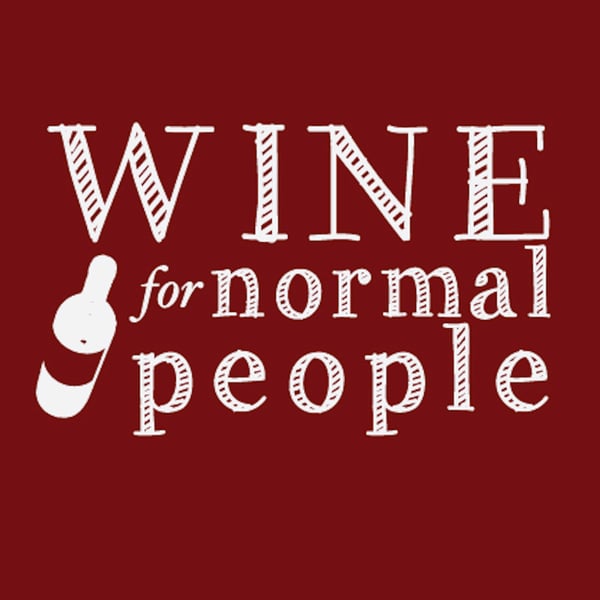Ep 167: Champagne -- The Region
Wine for Normal People
Wine for Normal People
4.6 • 1.5K Ratings
🗓️ 31 August 2016
⏱️ 53 minutes
🧾️ Download transcript
Summary
This time we address the fascinating terroir, land, climate, and history of Champagne. This is the less-told story of the region, not the one about how the wine is made or the different types you can buy. We hope to show Champagne in a different light.
*NOTE: We don't discuss the still wine areas of Champagne, Coteaux Champenois and Rosé de Riceys because they are made such limited quantities and are very hard to find.
What is Champagne?
- Sparkling wine exclusively produced from grapes grown, harvested and made into wine within the Champagne delimited region, in France.
Location, climate, terroir
- Northern location – Reims at 49.5 and Epernay around 49˚N (US—Canada border)
- LANDSCAPE:Sloping vineyards good for drainage and intensity of sun exposure
- CLIMATE:
- Cool: average temps of 66˚F/18˚C during growing season – grapes can’t fully ripen (acidic, lower sugar good for Champagne making)
- Wet, frost risk, low sunlight hours
- SOIL: Limestone subsoil – mainly chalk, marl, limestone
- GRAPES: Pinot Noir, Chardonnay, Pinot Meunier
- Pinot Noir: palate weight and dark berry aromas.
- Pinot Meunier: acidity, fruitiness. less susceptible to rot
- Chardonnay - creamy roundness, floral aromas
- Also permitted, rarely used: Pinot blanc, Pinot Gris, Petit Meslier, Arbane
- LOCATION/SUB AREAS:
- 84,000 acres/34,000 ha of vineyard
- 150 KM/95 miles east of Paris
- 320 villages, five main growing areas:
- Cote des Blancs– and particularly the Cote de Sezanne – are where the finest Chardonnay sites are found, outcrop of chalk.
- Montagne de Reims (chalk) and the Vallee de la Marne (Marl, sand or clay) are ideally suited to Pinot Noir and Pinot Meunier.
- Aube: Pinot Meunier
History
- Egyptians and Romans and the hatred of bubbles
- Champagne's rise to fame: 987, Hugh Capet was crowned King of France at the cathedral Reims. Association of the region with royalty
- Quality of the wine in the Middle Ages: light red, pale pink or grey, and attempt to use elderberry to darken them
- Dom Perignon and his REAL contribution to Champagne (hint: he neither liked bubbles nor any other grape apart from Pinot Noir), AKA -- why he rolls over in his grave whenever anyone pops open a bottle of Dom...
- How the English invented modern Champagne in the mid 1600s.
- The business of Champagne as it rose in the 1800s, including the story of the French Revolution and Napoleonic Wars
- The contributions of Veuve Clicquot—Barbe-Nicole Ponsardin with riddling and dosage (sweetness)
- The Champagne Riots
- World Wars
Interesting Champagne Facts
- Chilling Champagne in the freezer will dumb down the aromas. Chill in an ice bath for 15-20 minutes or refrigerate 3-4 hours before serving
- Younger wine is better colder (8˚ C/46˚F). Older wine is better a little warmer (10˚C /50˚F)
- The shape and condition of the cork indicates how long the wine has spent in the bottle.
- Trapezoid shape: young, newly bottled and the cork is still elastic.
- Tapers at the bottom: cork has been in there longer, older wine.
- Bubbles: Fizz dies with time
Transcript
Click on a timestamp to play from that location
| 0:00.0 | Thanks for |
| 0:08.0 | downloading Wine for Normal People Radio, |
| 0:10.0 | the podcast for people who like wine, |
| 0:12.0 | but not the snobbery that goes with it. |
| 0:14.0 | I'm Elizabeth Schneider, a certified sileier and certified specialist of wine. |
| 0:20.0 | And I'm MC Ice, just a wine-loving normal person. |
| 0:23.0 | So, I've been thinking of that Champagne a lot lately. |
| 0:26.0 | I thought I smelled something burning. |
| 0:28.0 | Oh, stop it. |
| 0:30.0 | And I have been thinking that we needed to do a podcast on Champagne. |
| 0:35.0 | Now, we have done podcasts on sparkling wine and we've talked about different types of |
| 0:41.2 | champagne and different types of sparkling wine, how they're made. about I was really fascinated by what I consider to be kind of the untold story of |
| 0:57.8 | Champagne that is a story that's really about terwa, but also about how history has played such huge role. |
| 1:09.0 | I thought it was about monks. |
| 1:11.0 | In Champaign, it's not really about monks as much as in other places, but there's so many |
| 1:18.0 | historical events that happened that made Champagne what it is today. |
| 1:23.2 | And what I thought we would try to do |
| 1:25.6 | is approach Champagne as a region, |
| 1:30.0 | not as a place that makes this very specific special kind of wine. |
| 1:36.0 | And we will leave some of the details. |
| 1:38.8 | This seems really strange, but we're going to try it. |
| 1:42.0 | Leave the details of Champagne that are not |
... |
Please login to see the full transcript.
Disclaimer: The podcast and artwork embedded on this page are from Wine for Normal People, and are the property of its owner and not affiliated with or endorsed by Tapesearch.
Generated transcripts are the property of Wine for Normal People and are distributed freely under the Fair Use doctrine. Transcripts generated by Tapesearch are not guaranteed to be accurate.
Copyright © Tapesearch 2025.

